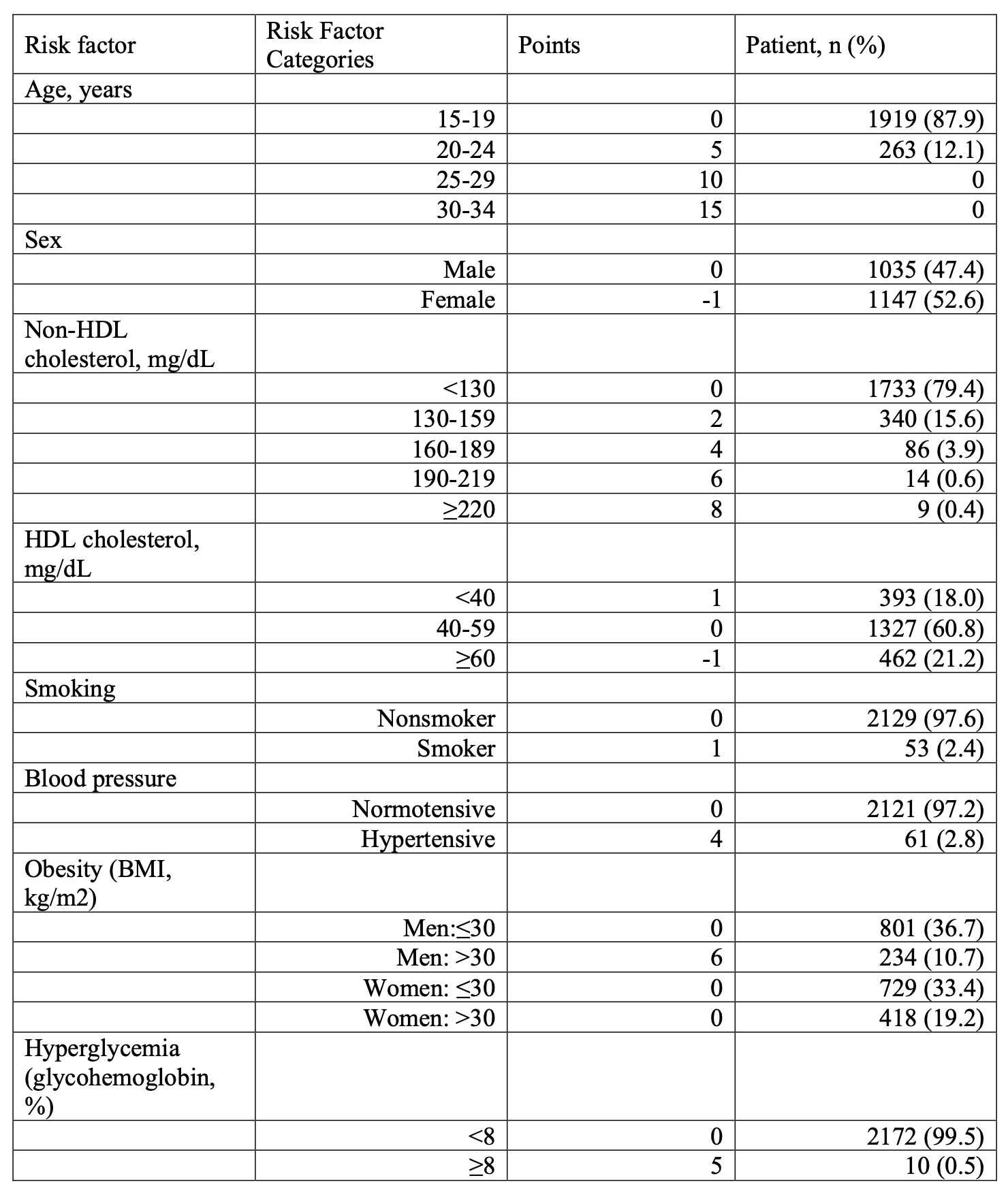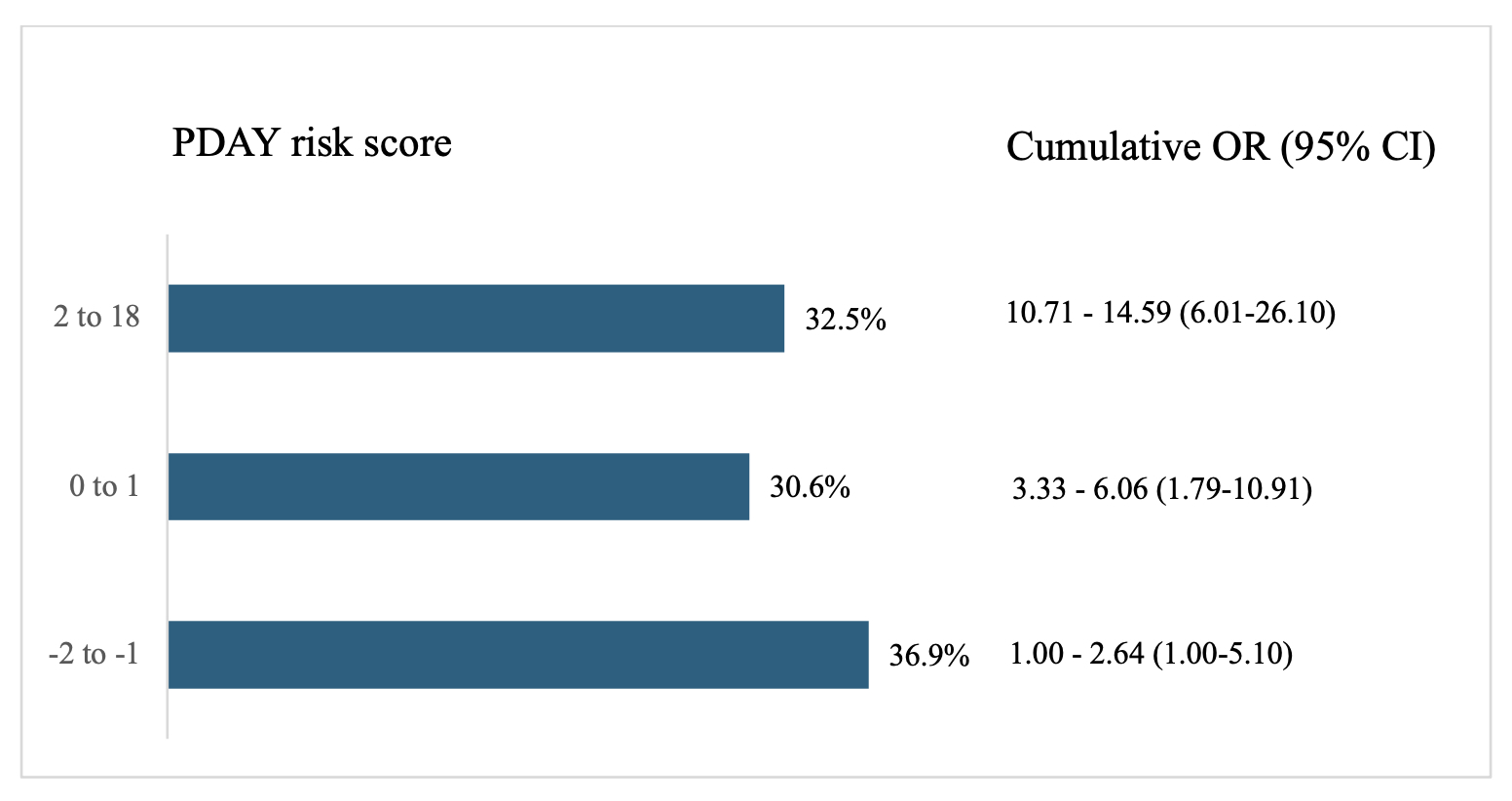Cardiology 2
Session: Cardiology 2
149 - Clustering of Cardiovascular Risk Factors in Underserved Pediatric Population
Friday, April 25, 2025
5:30pm - 7:45pm HST
Publication Number: 149.4468
Hanna Ankudovich, One Brooklyn Health (Brookdale University Medical Center), Brooklyn, NY, United States; Hetal P. Tangal, One Brooklyn Health, Brooklyn, NY, United States; Dushyant Mukkamala, Family HealthCare Network, Hnaford, CA, United States; Harsha Kanumalla, The Children's Hospital at Montefiore, New York City, NY, United States; Narendrasinh Parmar, East Tennessee Children's Hospital, Knoxville, TN, United States; Fernanda Kupferman, One Brooklyn Health at Brookdale Hospital, Brooklyn, NY, United States; Joseph Mahgerefteh, Icahn School of Medicine - - New York, NY, New York, NY, United States
.jpg)
Hanna Ankudovich, MD (she/her/hers)
Resident
One Brooklyn Health (Brookdale Hospital University Medical Center)
Brooklyn, New York, United States
Presenting Author(s)
Background: Pathobiological Determinants of Atherosclerosis in Youth (PDAY) risk scores have shown predictive value for future atherosclerotic cardiovascular disease (ASCVD) in young adults.
Objective: To assess cardiovascular risk factors (CVRF) prevalence and clustering in an underserved community, estimate cardiovascular risk using PDAY score, and analyze 25-year ASCVD risk based on baseline PDAY scores.
Design/Methods: This retrospective observational study included 2,182 patients aged 9–21 who had at least two well-child visits between 2018–2023, spaced > one year apart, with follow-up at age ≥15. Analysis: age, sex, race, Child Opportunity Index (COI) using zip code (Diversitydatakids.org, version 3.0), body mass index (BMI), blood pressure (BP), HDL, TG, LDL, HbA1c, smoking status. PDAY score was calculated for coronary artery calcification (CAC). Descriptive statistics was applied to categorical and numeric variables, with frequencies (percentages) and central tendencies (means and standard deviations). Linear regression was used for COI and race associations with PDAY score and its components, with P< 0.05 considered significant. Chi square and T test were used to compare study population to CARDIA baseline assessment.
Results: In comparison to the CARDIA study, the research cohort was younger, had a higher proportion of females, included more Black individuals and children with diabetes. Their BP was higher, while non-HDL cholesterol, HDL level and smoking rate were lower (Table 1). Details of the PDAY scoring system are shown in Table 2. The average PDAY score was similar to the CARDIA study cohort (1.39 and 1.3 respectively), even though this cohort was, on average, 6 years younger. Within the study population, 32.5% had a PDAY score ≥2 (Figure 1). There was no correlation between COI and race with PDAY score; however, there was a weak but statistically significant relationship with hypertension, r -0.054 (p=0.011) and -0.046 (p=0.033) respectively.
Conclusion(s): In this socioeconomically challenged, predominantly Black population, the 25-year risk of ASCVD, based on the PDAY score, is high. As observed in the CARDIA study, when the PDAY score was measured at ages 18–30, each 1-point increase in score was associated with an odds ratio of 1.22 (1.18–1.27) for the presence of CAC at ages 40–45. This highlights the importance of prevention strategies to mitigate risk in this high risk population.
Table 1. Comparison of study cohort with CARDIA cohort
.jpg) SD indicates standard deviation; Non-HDL-C, non-high-density lipoprotein cholesterol; HDL-C, high-density lipoprotein cholesterol; SBP, systolic blood pressure, DBP, diastolic blood pressure; DM, diabetes mellitus; BMI, body mass index; PDAY, Pathobiological Determinants of Atherosclerosis in Youth
SD indicates standard deviation; Non-HDL-C, non-high-density lipoprotein cholesterol; HDL-C, high-density lipoprotein cholesterol; SBP, systolic blood pressure, DBP, diastolic blood pressure; DM, diabetes mellitus; BMI, body mass index; PDAY, Pathobiological Determinants of Atherosclerosis in YouthTable 2. PDAY risk factors calculator and prevalence of risk factors in studied group at follow up visit
 Non-HDL-C indicates non-high-density lipoprotein cholesterol; HDL-C, high-density lipoprotein cholesterol; BMI, body mass index
Non-HDL-C indicates non-high-density lipoprotein cholesterol; HDL-C, high-density lipoprotein cholesterol; BMI, body mass indexFigure 1. Prevalence of PDAY risk scores in studied population with respective cumulative odds ratios (OR) for either development of incident CAC or 10-year progression (>20 Agatston Units) of CAC in PDAY risk score from year 0 to year 25 observed in CARDIA study population
 OR indicates odds ratio; CI, confidence interval
OR indicates odds ratio; CI, confidence interval
